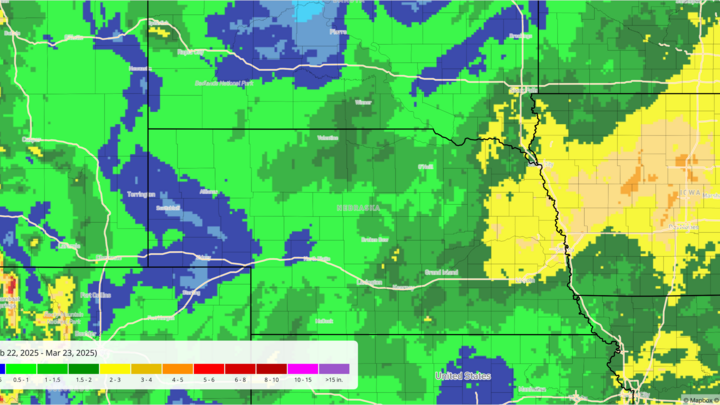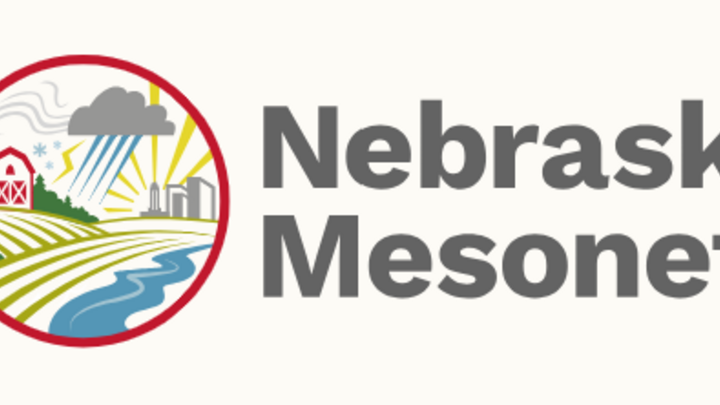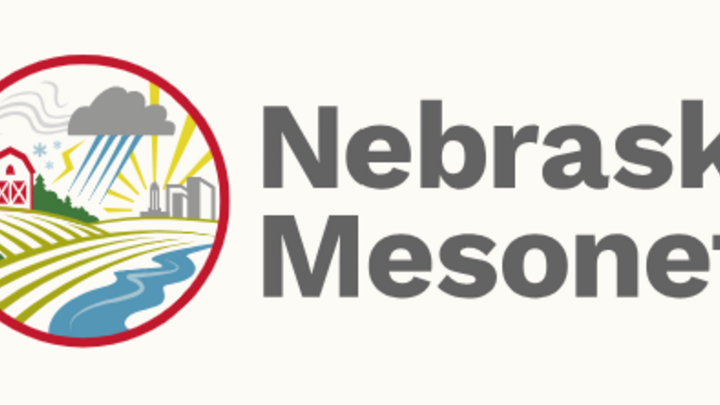Soil moisture improvements in eastern Nebraska
The blizzard last week was highly problematic for many- hence Governor Pillen's disaster declaration for Burt, Butler, Cass, Clay, Colfax, Cuming, Dodge, Douglas, Fillmore, Gage, Jefferson, Lancaster, Platte, Polk, Nuckolls, Saline, Sarpy, Saunders, Seward, Thayer, Thurston, Washington, Wayne and York counties. A post-assessment of last week's blizzard will be coming soon.
But the silver living from that storm is that much of eastern Nebraska received significant moisture, with some places in southeast Butler and northeastern Seward counties picking up a little more than 2" of liquid water equivalent. With warm ground temperatures, that is moisture that we get to keep for the coming season. Soil moisture percentiles from NASA's SPoRT LIS model show a large area of improvement in areas east of Highway 81 and along/north of Highway 34 this month.
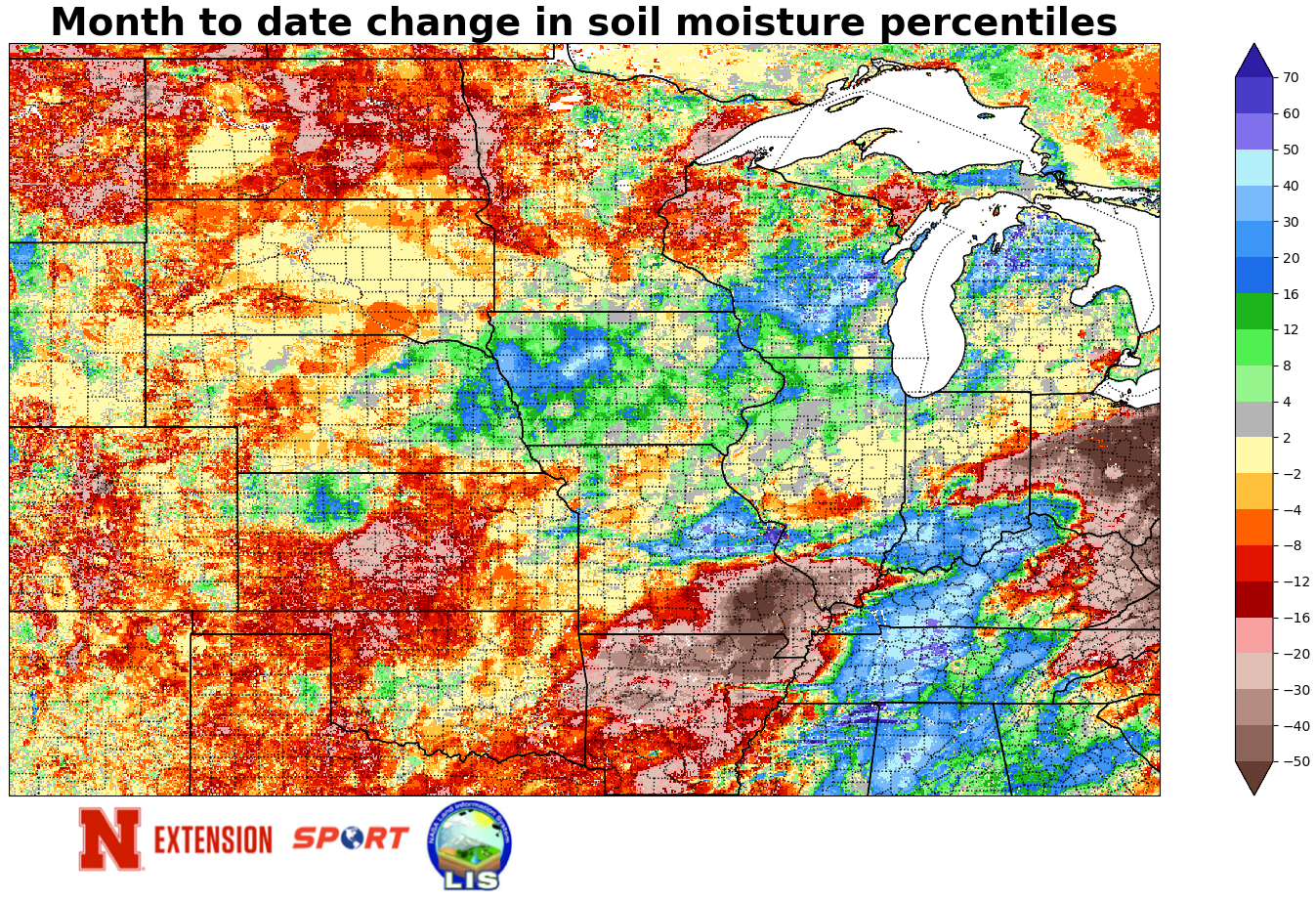
Figure 1. Soil moisture percentiles change in March 2025
This doesn't imply that there is a full profile of moisture in those areas and for some locations in eastern Nebraska, soil moisture percentiles are still below the near-normal range (shown in gray on the map). The southern border counties in eastern Nebraska have missed out on the best moisture and there has been a noticeable drop in soil moisture from Harlan County over to Thayer County. Most of the western half of the state has not seen much moisture this month and much of Nebraska west of Highway 281 is below the 10th percentile. There was decent moisture from snow earlier in the month in parts of the Sand Hills (e.g., Cherry County) but that is barely evident now. Areas of increasing concern include southwestern Nebraska for onset of drought and in the southern Panhandle for continued degradation.
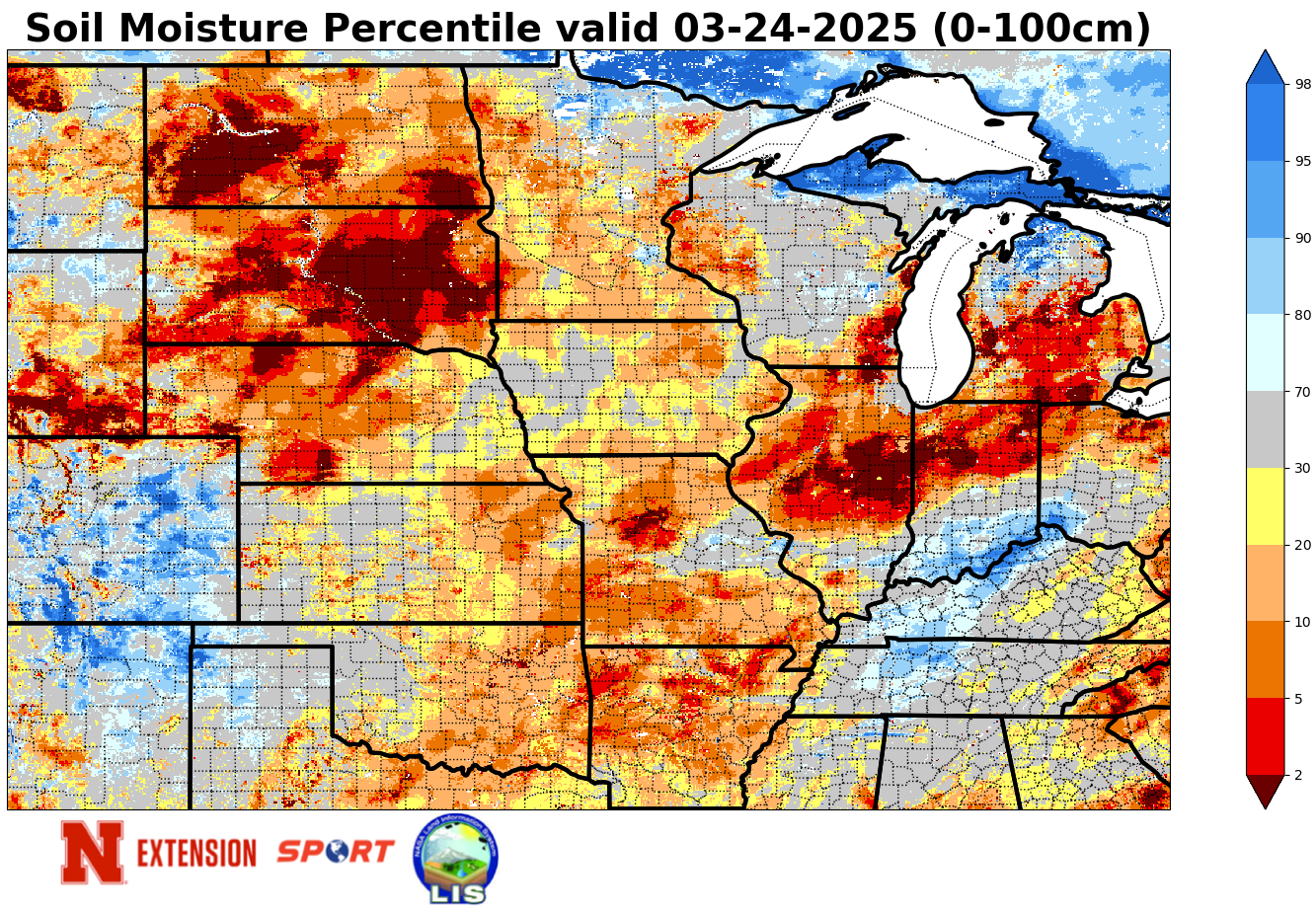
Figure 2. Current soil moisture percentiles
